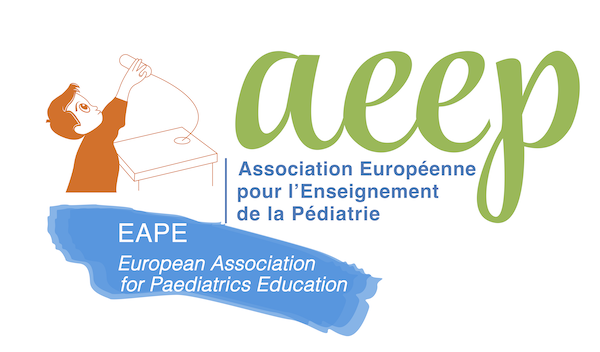CHARTER ON CONTINUING MEDICAL EDUCATION IN PAEDIATRICS IN THE EUROPEAN UNION
1. Introduction
The Charter on Continuing Medical Education of Specialists in the EC, UEMS (1994) emphasises that control of CME must be in the hands of organisations representing the medical community. Preferably National Paediatric Associations or Societies, or syndicates, not the governments, should be the authorities for the promotion, implementing and certification of Paediatric CME in Europe. CME is an ethical obligation for every paediatrician throughout her or his entire professional career. Implementation of CME is obligatory. However, how it is achieved in individual countries will differ.
2. Standard Setting and Organisation
2.1. European Level
The CME-Working Group with one delegate from each member country was set up in 1994 by CESP with the purpose of guaranteeing the highest standards of paediatric care by adequate training and CME in all countries. This may be accomplished by professional input, structure, assessment, accreditation and quality assurance, safeguarding the financial independence and European co-ordination.
2.2. National Level
In each country the Co-ordinating Paediatric Authority (CPA) should be established to keep a register of the validated CME activities. Paediatricians in private practice should organise their practice in order to participate in CME appropriate to the type of clinical work in which they are engaged. They should be prepared to compensate the expenses associated with the activities out of the revenue of the practice. Paediatricians in salaried positions should have adequate compensation for participation in CME. It should be laid down in the employment contract.
The CPA should publish an annual report with a summary of paediatric CME activities in the previous year in the member state concerned and the record of attendance of paediatricians.
In the long term it may be necessary to establish an Appeals procedure to hear cases where opinions differ over whether or not an individual has or not completed CME.
2.3. Quality Evaluation and Validation
The evaluation and validation is organised by CPA.
3. General Aims of CME in Paediatrics
3.1. To enhance the development of a paediatric profession which evaluates and improves the standards of its clinical practice. This should be based on evidence-based medicine and paediatric experience with highest ethical standards.
3.2. To sustain individual paediatricians in their work relating to the health and illness of children and their families, support them in their readiness to evaluate their actions and change them when appropriate, and take care of their own well-being. Every paediatrician is herself/lhimself responsible for her/his life-long learning.
3.3. To create a CME System which meets the needs of education individually, systematically, according to a plan, and in accord with the UN convention on the rights of the child.
4. Structure of CME
4.1. Quantity of CME activities
The minimum quantity of validated CME should be not less than 250h/5 years. The accreditation points may also be earned by attendance at validated CME events outside the home country, thereby stimulating international exchange of paediatric experience and practice.
4.2. Professional Balance of CME Activities
There should be a balance between CME of academic and clinical paediatrics taking into account differences in the paediatric profession in different European countries.
4.3. External and Internal CME
The external education contains courses, meetings, seminars and group discussions outside the hospital or office.
– The topics should be based on the needs of the target audience and rotate in appropriate cycles in any country or regional area.
– The number of participants in a single course should be limited to a number which allows use of learner-centred methods.
– Each presentation should include sufficient time for interactive discussions. Handouts should be available.
– Every course should be evaluated with focus on learning.
The internal CME contains education organised within the hospital department or private office. It should be differentiated from training sessions.
5. Performance and Education
The specific aims of CME may be determined by the CPA. This is in accordance with the traditional ways of Europe. The benefits include that it is easy for participants. However, it is an authoritative system which may result in excellent teaching, but less learning.
To avoid a passive leaming process the goals of learning should be set up by the participants themselves, not by CPA or other body. This alternative approach may be based on a Paediatric Portfolio, individually produced, based on professional history, and paediatricians own concept of his/her skills. The aims are challenged continually during the CME through the critique of colleagues, and students when appropriate, and modified accordingly. The events of learning and personal professional development are recorded. The Paediatric Portfolio is continued through the career as part of the personal developmental process.
6. Evaluation
Educational events should be evaluated by CPA in advance and by the participants on site.A standardised form should be available by which the individual paediatricians are evaluated at regular intervals, and by which each event is evaluated . CPA is responsible for recording of the results at the national level.
7. Credits and Finances
An awarding system is necessary on an hourly basis. It should lead to benefits for the participants.
A guideline on how to deal with commercial support should be drawn up in order to maintain independence of content in accordance with the UEMS Charter . The limit of industrial support should be determined.
8. Research
High quality studies of the performance and effectiveness of CME should be promoted by CESP. The results should be available for discussions by all member states.
Approved by the CME Working Group and CESP Assembly Copenhagen, May 31 1997
